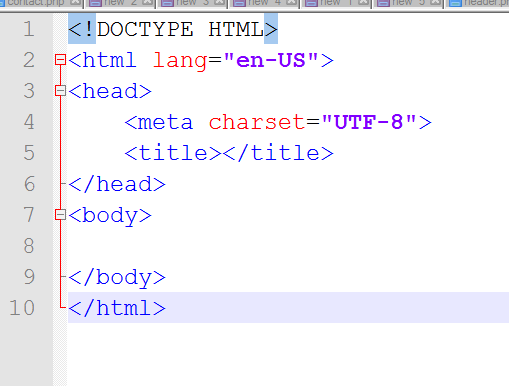

The head part contains things that won’t appear on your page. HTML pages are made up of two distinct parts - the head part, and the body part. Later you may move to a newer version, but HTML 4.01 will be perfect for most of your sites. You are going to be using HTML 4.01, the most recent version of HTML. It basically tells your browser which version of HTML you’re using in your page. That complicated looking bit at the top isn’t something you need to worry about just yet. Modify your page to this: Very Important Now we’ll add in the rest of the structure. HTML elements can contain text and other HTML elements inside them, and these two tags will contain the rest of the HTML that makes your page. Note that when I say “standard”, that means “you must put it there”. These are the standard start and end tags on any page. Some tags won’t need that end tag, but most do, so don’t forget it. An end tag is simply the start tag with a forward slash in front of the element name. So, at the point in your text that you want the bold to start, you just stick the angle-brackets around that and put, and when you want it to stop, you put. A start tag opens an element and an end tag closes it again.įor example, to make text bold, you use the b element. Together, a start tag and an end tag form a HTML element. Some of those tags you can see are ”start tags”, like, and others are paired with them and called “end tags”. That’s all the HTML that goes into making this page. Surrounding all that is a load of stuff, all being encased by s. See how, later on, there’s some text? It’s the words you’re reading now.

Yes, it probably makes little sense yet, but that doesn’t matter at the moment. The code that makes this page will appear.

I’m sure you’ve seen them in someone’s code before, but if you haven’t, right-click this page and select “ View Source”. They are the things between the brackets. Let’s start with the first tags you’re going to learn.


 0 kommentar(er)
0 kommentar(er)
